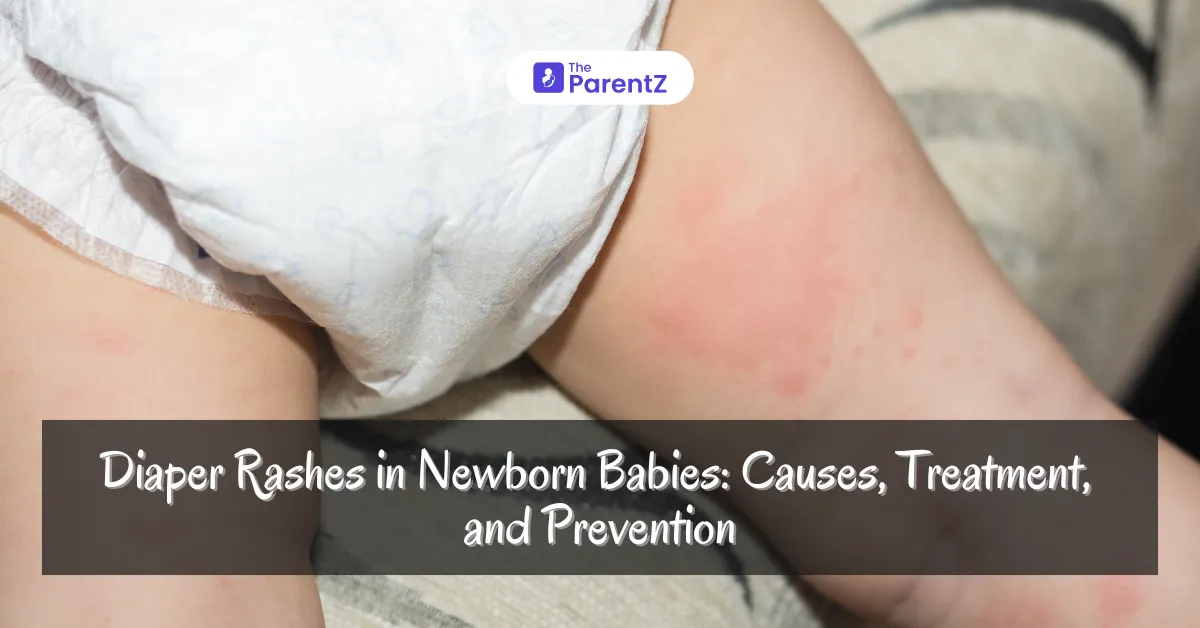Diaper rash, also known as diaper dermatitis, is a common skin condition in newborns. It occurs due to irritation in the diaper area and is often uncomfortable for the baby. With proper care and attention, most diaper rashes heal quickly.
What Causes Diaper Rashes in Newborns?
1. Prolonged Moisture Exposure:
• Wet diapers create a warm, moist environment, breaking down the skin’s protective barrier.
2. Irritation from Urine and Stool:
• Ammonia from urine or enzymes in stool irritate sensitive skin.
3. Chafing or Friction:
• Tight diapers or constant rubbing can lead to rashes.
4. Allergic Reactions:
• Certain diaper materials, wipes, or soaps can trigger rashes.
5. Yeast or Fungal Infections:
• Warm, damp areas encourage fungal growth (e.g., Candida infections).
6. Introduction of Solid Foods:
• Changes in diet may alter stool composition, increasing irritation.
Symptoms of Diaper Rash
• Red, inflamed skin in the diaper area (buttocks, thighs, genitals).
• Dry, scaly, or shiny patches.
• Small bumps or sores in severe cases.
• Fussiness or crying during diaper changes due to discomfort.
Treatment for Diaper Rashes
1. Frequent Diaper Changes:
• Change diapers promptly after wetting or soiling.
2. Gentle Cleaning:
• Clean the area with warm water or alcohol-free wipes. Avoid harsh soaps.
3. Air Exposure:
• Let the baby go diaper-free for some time each day to allow the skin to breathe.
4. Barrier Creams:
• Use zinc oxide or petroleum-based ointments to protect the skin.
5. Antifungal Creams:
• For yeast infections, consult a doctor for antifungal medications like clotrimazole.
When to See a Doctor
• Rash persists for more than 3 days or worsens.
• Presence of pus, blisters, or yellow crusts.
• Accompanying fever or signs of infection.
Preventing Diaper Rashes in Newborns
1. Frequent Changes:
• Keep the diaper area clean and dry by changing diapers every 2-3 hours.
2. Use Hypoallergenic Products:
• Opt for fragrance-free diapers, wipes, and laundry detergents.
3. Apply a Barrier Ointment:
• Prevent irritation by using a protective cream after every diaper change.
4. Proper Diaper Fit:
• Use well-fitted diapers to avoid chafing, but ensure they are not too tight.
5. Cloth Diapers:
• If using cloth diapers, wash them thoroughly with mild detergents and ensure proper drying.
Note for Parents
Diaper rashes are common and often mild, but they can escalate if not managed early. Focus on maintaining good hygiene and giving your baby’s skin the care it needs to heal and stay rash-free.
Explore related articles on the TPZ app:
• “Skin Conditions in Newborns: A Complete Guide.”
• “Choosing Safe Baby Products for Newborn Skin.”








Be the first one to comment on this story.